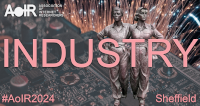CHINESE SMART CITY, AN ORGANIC ENTITY IN THE AGE OF AI: A GENEALOGY OF CHINESE SMART CITY METAPHORS
DOI:
https://doi.org/10.5210/spir.v2024i0.14058Keywords:
sociotechnical imaginaries, smart city, cybernetics, genealogyAbstract
Since the 1980s, Chinese cities have been built based on the image of a mechanized city. Maçães perceives them as a product “in the age of mechanical reproduction”, repressing "genuine spontaneity; the stirrings and desires of life”. However, with the increasing integration of digital and intelligent technologies in Chinese cities, smart cities with a new image are rising. They are imagined as organic entities, a human brain, namely "City Bain". The City Brain is anticipated to sense what happening in the city in real time and make overall decisions. More importantly, the organic smart city is expected to dedicate to serving the people. These two contrasting images represent a shift in Chinese visions of intelligent technologies' role in society. In contrast to mechanic cities, the organic entities concerns more about citizens' role in an intelligent environment and how this intelligent environment reconfigures the governance mode. Then the questions are: What does this organic metaphor mean, why it has emerged, why it is so important that local government even made a regulation centering this metaphor? Through the combination of the fieldwork and discourse analysis, this work studies the genealogy of the discursive developments of Chinese smart city metaphors. AS a result, this study identifies the hidden historical undertakings and societal strivings behind current metaphor of organic entity. This work also casts a light to the shift from mechanization to intelligentization in China, by analyzing and outlining the features of the intelligent transformation in China.Downloads
Published
2025-01-02
How to Cite
Shen, . J. (2025). CHINESE SMART CITY, AN ORGANIC ENTITY IN THE AGE OF AI: A GENEALOGY OF CHINESE SMART CITY METAPHORS. AoIR Selected Papers of Internet Research. https://doi.org/10.5210/spir.v2024i0.14058
Issue
Section
Papers S

